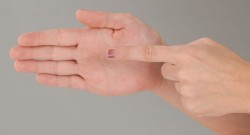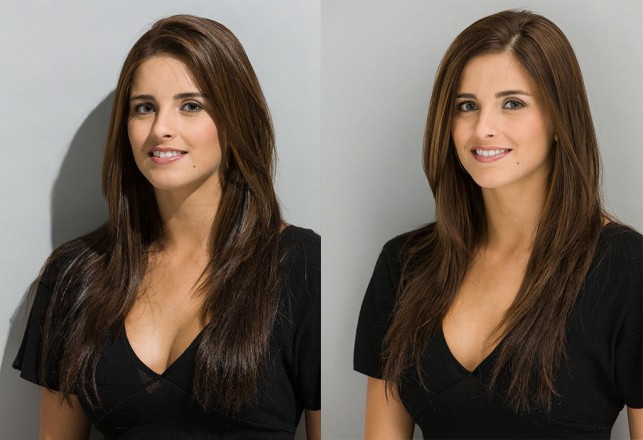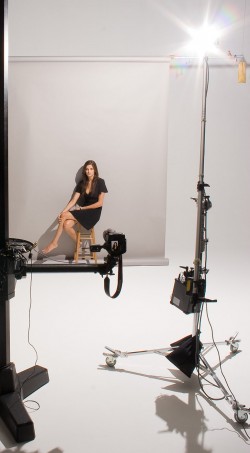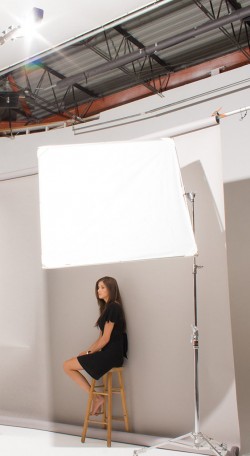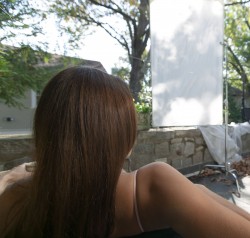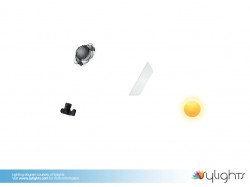Photographer's Lighting Handbook: Quality of Light
Quality of Light
Here’s a question for you: As a subject moves closer to a light source, what happens to the light’s quality—is it harsher or softer? Hmmm.
As you move a subject closer to the light, the light striking the subject gets brighter, but what’s the quality of that light when the subject’s close to it? Harsh? Soft? I’ve posed that question to groups of photographers around the world, and only a few knew the answer. Surprisingly, most photographers say “harsh,” when the answer is actually soft. They confuse quantity (the brighter light) with quality (harsh versus soft).
Think about it: In nature, where is the light brightest? Outdoors on a cloudless day, with the sun high in the sky, the light’s so bright you have to wear shades. You might say that bright equals harsh and, in this case, it does—but not always. The shadow edge is the only way to know the quality of light. The sun casts distinct, sharp-edged shadows, so that light is harsh. Now the sun is huge—850,000 miles in diameter—and what makes its light harsh is its relative size. Even something that big and far enough away will produce harsh light.
Rule of Thumb
Here’s a rule of thumb (literally) to check if a light is, in fact, harsh. Your thumb held at arm’s length from your eye is big enough to cover the sun. (I’m not telling you to look at the sun though.) Practically, it means that any light you can cover with your thumb will give you harsh light.
Here’s another way to check it:Hold the palm of one hand toward a light. Hold the index finger of your other hand over the palm and look at the shadow. Do you see a sharp outline of your finger? If you do, the light is harsh; however, if your thumb is too small to cover the light source, the quality of the light is soft, or heading toward it.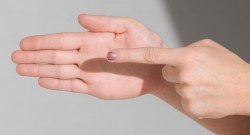
Continuing our analogy about the quality of light in nature, the light on an overcast day is soft. If you can’t see the sun at all through the cloud cover, the light is very soft indeed. Talk about a really large light in relationship to the size of the subject; on an overcast day, the entire sky is the light!
Try this: Move your hand and index finger toward a lamp in the room and watch the shadow. The closer you get to the lamp, the less distinct the edge is. When you’re pretty close, the shadow all but disappears.
Harsh and Soft Light: A Comparison
Here are two portraits of Factor Women model, Jessica Miller. The first one is lit with harsh light, while the second one is soft light.
In the first image, the distinct shadows in the background, on her right cheek, and under her chin tell us instantly that she’s lit with a small light. The quality is harsh. In comparison, the second photo has almost no shadow at all. Look closely at the background and you’ll see a slightly darker area to Jessica’s right. This light is very soft.
Creating Harsh/Soft Light
Harsh light is easy to create. Here, I placed a bare-bulb, Comet electronic flash head about 20′ from my subject, positioning it high and to the right of the camera. Is 20′ the magic number for this head to produce harsh light? Nope. I sat on a stool on the set, held my thumb at arm’s length, and had my assistant move the light back until it disappeared. Then, because people wanted to know how far away the light was, we measured it. I pointed my Sekonic L-758DR DigitalMaster incident meter at the light to get the exposure: ISO 100, 1/160 at f/11 on my Canon EOS-1Ds Mark III.
Soft light isn’t much more difficult. Using the same setup, I put a 48×48″ Chimera diffusion panel between the flash head and Jessica. Diffusion panels spread light in two dimensions: height and width. As the area of the panel increases, the amount of light reaching the subject decreases (the same way that cloudy days are always darker than sunny ones). I metered the light again, pointing the dome at the panel: ISO 100, 1/160 at f/6.3. The panel reduced the light by 1 2/3 f-stops.
Outdoors
The same lighting rules hold true outdoors. In this image our model, Cara, is lit by the sunlight falling through tree leaves—harsh light. Check out the shadow under her chin: it’s a sharp-edged shadow. (I tend to avoid harsh light, because it just doesn’t flatter like soft light does.)
When shooting outdoors, the best part of knowing how to make harsh light soft is that I don’t have to wait for clouds to roll in. Instead, I set up my very own “porta-cloud”—a 42×72″ Chimera diffusion panel on a Matthews C-Stand—between the tree and Cara. The dark area surrounding Cara is the soft light from the panel. The rest of the light in the scene is still harsh.
The reverse view over her shoulder shows the pattern where the leaves blocked the sun.
The final result is a combination of harsh light in the background along with soft, even light on Cara. Her skin is radiant, smooth, and glowing. And it’s all thanks to soft light.
Until next time, light well and prosper!

